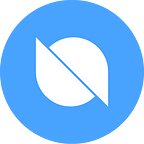Ontology Tech Viewpoint | Let’s make an NFT
Recently, Yuga Labs, the production company of Bored Ape Yacht Club, announced the completion of a $450 million seed round of funding at a $4 billion valuation, once again igniting the NFT industry and market. And tThe origin of this legendary story is only one sentence ↓↓
So, how to make NFT? Do you draw it first and then upload it? NO NO NO~! Let usNext, we will start with the two roles of painter and architect to help you get started quickly and join the metaverse world!
If you are a painter
If you are a painter, then congratulations on the relatively easy way to make an NFT. ~ You can choose to make a PFP type of NFT, easy to make, and more popular and approachable.
Step 1: Drawing
Most of the current PFP projects utilize have the concept of attributes, and the difference between different NFTs is determined by different attributes. Typical attributes are background color, eye shape, facial accessories, and so on. Random permutations of these attributes can create different NFTs.
*Image source: Internet
So, if you want to create a series of 1000 NFTs with 3 attributes of eyes, face ornaments and clothes, what you need to do is not to draw 1000 pictures, but 31 PNGs, i.e. 1 picture of the main character, 10 pictures of eyes, 10 pictures of face ornaments and 10 pictures of clothes, and then complete the combination of NFT pictures in batch (1*10³) by a random generation program.
Step 2: Upload to Marketplace
Once you have done so, you can publish your NFT work through the various NFT marketplaces.
Take Opensea as an example, after logging in with your own data client, click [Create] and fill in the information about the NFT to publish your NFT. When you want to sell it, you need to pay a certain amount of Gas fee to be able to auction it on the market.
Step 3: Display in the metaverse
Of course, NFTs areis not only showcased onin the NFT market, but metaverse projects such as Decentraland and Cryptovoxels also provide athe stage for NFTs.
*Image source: Decentraland
If a visitor is interested in your work, and your work happens to be for sale on Opensea, there is the possibility of a direct transaction., Ffor example, Decentraland can jump directly to Opensea, and of course the metaverse is not limited to the work that can be shown in PFP (although PFP is still the most popular hottest at the moment). With the growing interest in the virtual land sector, NFTs and the metaverse are opening their doors to architects as well.
If you are an architect
For architects, the current phase of the virtual land and property boom is the perfect time to get in on the action, such as the creation of scenes in Decentraland.
Let’s take here the example of The Builder, a tool for creating 3D scenes in Decentraland that does not require writing code.
Step 1: Create a scene
After entering the official website and logging in, click on [BUILDER], you can start creating scenes on this page. The size of the scene can be adjusted by rows and columns (the current area cannot exceed 32). FAnd for the time being, only rectangular scenes are supported, irregularly shaped scenes can only be achieved through the SDK.
Also, the ground in the scene can be selected from the ‘Asset’ column with various ground textures. In addition to this, Decentraland itself offers a wide range of content for the creator to choose from. It is up to the user to decide how the contents of the scene are combined, displayed, etc. The user can simply click on the item and drag it to any location in the scene. If you want to add a 3D model built outside Decentraland, you can do the following:
- Create 3D models using SketchUp, Blender, Maya, etc.;
- Use The Builder tool to import, the model format must be gltf or glb;
- Click New Asset Pack in the scene editor;
- Drag in the model file;
- Select Import Assets;
- After naming the asset pack, press 【Create Asset Pack】.
After importing, there is no difference between using the new asset package and using the asset package that comes with the project.
Step 2: Release scenarios
When you have finished creating it and pressed [Publish], it means the publishing is successful. There are two options for the launch: one for the scene pool and one for your own land.
Note that if you have your own land, you can choose to use the created scene on your own land. Of course, you can also choose to publish it in the scene pool for display, and for others to use to earn money.
Conclusion
Whether you are a painter or an architect, there is a tremendous opportunity to take a shot at and cash in on the metaverse in the future. Such spontaneous opportunities are rare in the centralized Web2 and will be more readily available in a metaverse with fewer rules and strictures. In addition to the above areas, unprecedented directions like Digital Fashion are giving traditional apparel designers new options. But before this can begin, designers still need to create a decentralized account, and furthermore a DID, through decentralized Web3 portal clients like ONTO, MetaMask, etc., to help them accumulate personal value and data and achieve more economization of their behavior and data.
Follow us on social media!
Ontology website / ONTO website / OWallet (GitHub)
Twitter / Reddit / Facebook / LinkedIn / YouTube / NaverBlog / Forklog
